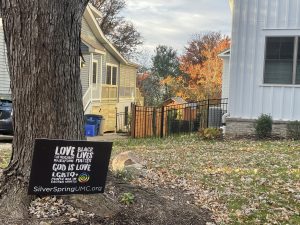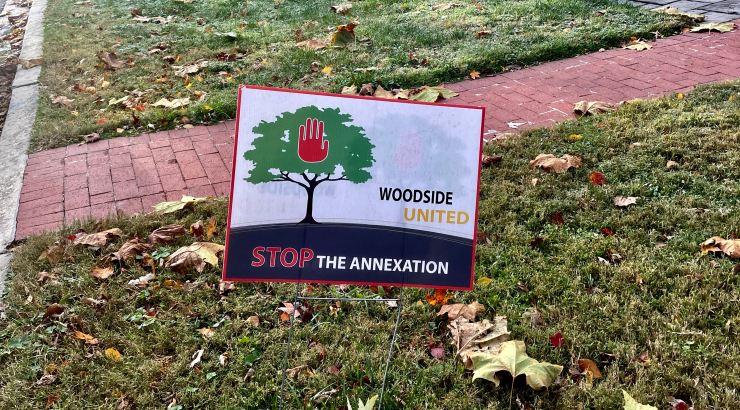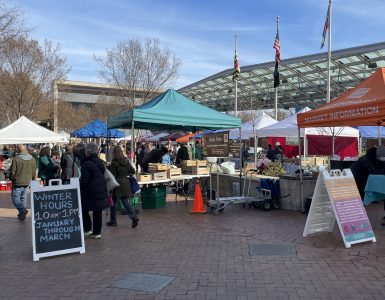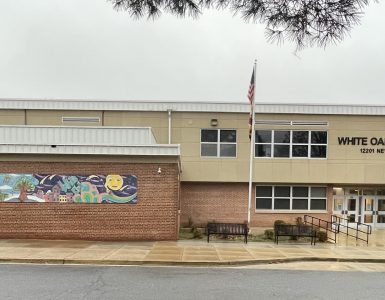Montgomery County is teeming with heated debate over a proposal seeking to address racial and socioeconomic justice through land use. As Thrive Montgomery 2050 currently sits with the County Council and County Executive pending final review, community tension builds.
Thrive tackles issues ranging from housing and transportation to climate control. Advocates have described it as a visionary document that will provide guidance and framework for the county’s growth over the next 30 years.
However, one aspect of the plan is generating a disproportionate amount of heat — the potential for up-zoning in suburban communities.
Current county policy dictates that certain neighborhoods can only consist of single-family detached homes. “If you’re not somebody who can afford a single-family detached home, you’re not allowed access to that community,” explained Jane Lyons.
Lyons is the Maryland Advocacy Manager for Coalition for Smarter Growth, a nonprofit focused on promoting inclusive, accessible communities in the Washington metropolitan area. Thrive has been Lyons’ main focus over the past two years.
Right now, the average single-family detached home in Montgomery County costs $855,079. Home values increased by more than 12% over the past year. Meanwhile, the county population continues to rise, with the 2021 census showing significant increases in Black, Latino and Asian populations.
Local economist Gray Kimbrough pointed out that while the county has had a majority-minority population for over a decade — meaning the majority of residents identify as a racial minority — 57% of single-family detached homes are still white-owned.

Thrive supporters suggest that this data shows an urgent need for increased affordable housing to accommodate a more racially and economically diverse population. On the need for affordable housing, opponents of Thrive agree.
“Nobody is going to say there’s not a problem with affordability,” said Jamison Adcock, Vice President of the Aspen Hill Civic Association and Thrive critic. “It’s long been expensive. There are things that can and probably should be done to address that.”
Clashing community voices
Adcock and others maintain that while its goals are admirable, Thrive is an “incomplete” solution. “I would give it a ‘D’ if I were a teacher and a student handed it in as an assignment,” Adcock said.
“Thrive is nothing more than an empty folder,” agreed Cary Lamari, an Aspen Hill resident and outspoken Thrive critic. “We end up with density. We end up with environmental degradation. We end up with the displacement of members of our county.”
Lamari fears the county will not address his concerns until well after the proposal is voted into place. He and others point to a need for more community engagement before action can be taken.
Silver Spring resident Mike English said he and other Thrive advocates openly acknowledge zoning alone will not be enough to sustain the county’s growth. “It’s necessary, not sufficient,” he said.
English is a volunteer member of the steering committee for Montgomery for All, a grassroots group organized by Coalition for Smarter Growth. He has also written several pieces for local news outlets addressing aspects of Thrive.
Thrive’s website documents outreach efforts beginning in December 2018, listing dozens of special events, public hearings, presentations and Zoom meetings open to the public.
Nevertheless, Adcock says, “there’s no listening” when concerns are presented at these meetings. “When someone raises a point, they call it myths,” he said.
Dan Reed, a Thrive advocate from Silver Spring, raised concern about such attempts to downplay the county’s tireless community outreach on Thrive. “[The county] held over 160 meetings, had materials in eight languages and specifically targeted people of color, renters and young people,” he said. “To dismiss this outreach as ‘performance art’ says input from these communities doesn’t matter.”

English also reiterated that Thrive itself does not directly change zoning. While critics like Lamari fear the immediate upzoning of their neighborhoods, English said in reality, a public outreach process would have to occur before any zoning changes are implemented.
Reckoning with history
Montgomery County shifted its land-use policies beginning around the 1960s, creating zoning restrictions that still affect housing trends today. “As soon as explicitly racist zoning came under attack, single-family home zoning increased,” English said. “That’s not a coincidence.”
Lyons agreed, explaining, “The way we built up the suburbs in the U.S. following World War II through today resulted in the economic and racial segregation that we have in Montgomery County.”
Thrive would allow the county to up-zone suburban areas where previously only single-family detached homes could be built, in the hopes of encouraging greater diversity in these neighborhoods. Lyons said Thrive envisions “a different kind of suburb” – one more walkable, accessible and affordable to people of all backgrounds.
“If you only allow density to be where it always has been,” English said, “you’re keeping everyone where they always have been — and that has obvious issues.”
Quantifying diversity
Thrive opponents often point to the county’s existing diversity as a reason why further change isn’t needed. “The saying is, ‘It ain’t broke, don’t fix it,’” said Silver Spring homeowner Elizabeth Joyce. “Why are we fixing something that ain’t broke?”
“When I think about the section of Chevy Chase I live in, it’s incredibly diverse,” said Thrive critic Stacey Band. “My daughter rides a school bus. There are easily 25 kids, and my child is probably the only native English speaker with a pale complexion. And I love that. It shows her that we all deserve to live here.”
In response, English pointed out that this diversity often comes from the type of housing Thrive would enable. At this time, current zoning regulations make affordable homes effectively illegal to build. In this way, English said, Thrive opponents are fighting against mechanisms that enable the very diversity they claim to champion.
Undesirable allies
A recent story from far-right outlet Breitbart News called Thrive a “war on single- family home neighborhoods.” Thrive opponents are quick to distance themselves from this sort of right-wing fearmongering.
“We do not subscribe to the ‘war on the suburbs’ narrative,” Joyce said. “We want equity. We want decency. There’s nothing any of us have ever said that would put us in the camp of Steve Bannon.”
Public comments on an online petition calling for the rejection of Thrive reveal homeowners’ fiery opposition to zoning changes. The petition received over 800 signatures.
Nevertheless, English said it’s “no coincidence” that the county’s wealthiest and whitest neighborhoods tend to oppose Thrive the loudest. “There’s a lot of progressives who need to wake up and check their allies because they’re not going to like who they are,” he said.
When asked by The Wash to address the Breitbart article, Lamari refused, saying it “doesn’t deserve a response from us.” He said local media should focus on the “real, substantive concerns” of Thrive critics.
“It’s not dignified,” he said. “We know who we’re fighting for, and that’s the end of it. We have nothing to do with Breitbart.”
Both sides tend to agree that it’s unfounded and unfair to suggest Thrive will result in the end of Montgomery County’s suburbs.
“It’s not the end of the suburbs,” Lyons said, “but it may be the end of some of the less savory characteristics of the American suburbs.”
Clarification: A previous version of this story contained a caption and photo that lacked context. It has been replaced.















Add comment